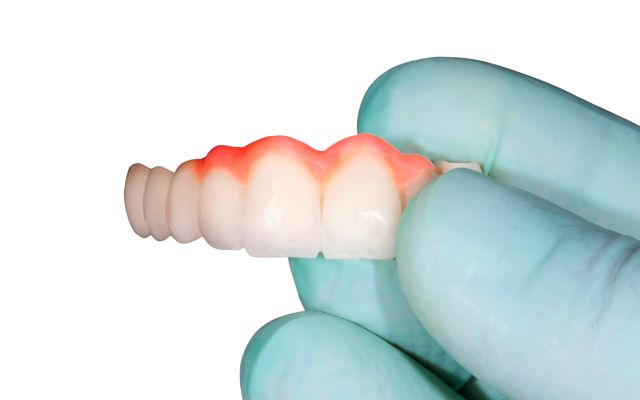Dental Bridges
Restore your smile and regain full function with a custom dental bridge designed just for you. From single missing teeth to multiple gaps, dental bridges offer a proven solution that looks natural and feels comfortable without the inconvenience of removable dentures.
Spring Orchid Dental Bassendean provides expertly crafted dental bridges tailored to match your smile. Our experienced team will guide you through every step to ensure your new teeth look seamless, fit perfectly, and help you eat, speak and smile with confidence again.
What Is a Dental Bridge?
A dental bridge is a fixed restoration used to replace one or more missing teeth. It anchors artificial teeth called pontics to the natural teeth or implants on either side of the gap.
Each bridge is carefully designed to match the shape, shade and contour of your surrounding teeth to help you chew, speak and smile with confidence again.

Top Benefits
- Fill up the gaps or replace lost teeth.
- Keep the face in shape.
- Prevent the location of the remaining teeth from shifting.
- Restore chewing abilities.
- By restoring missing teeth, it improves speech and articulation.
- Improve the appearance of your natural teeth.
- A permanent dental item as an improvement or an alternative to a removable partial denture.
- Dental bridges and dental implants are used to restore lost teeth.
When it comes to replacing lost teeth, a dental bridge is an alternative to implants. Bridging is a “fixed” solution, which means it cannot be removed from the mouth like a partial denture. As a result, it remains a popular alternative among patients who are unable to undergo implant therapy.
Types Of Bridges
• Traditional Bridges Supported by crowns on neighbouring teeth.
• Cantilever Bridges Used when only one adjacent tooth is available.• Implant Supported Bridges Anchored by dental implants for maximum strength and longevity.What to Expect
Step 1: Consultation and Planning
We evaluate your oral health and take digital impressions to ensure a precise fit and natural look.
Step 2: Tooth Preparation
The supporting teeth are gently reshaped to hold crowns if needed. A temporary bridge is placed for comfort.
Step 3: Final Placement
Once your custom bridge is ready, it is carefully bonded into place to restore your bite and your smile.
Dental Bridge Cost
Dental bridges cost is determined by your oral health and the type of bridge you require. Don’t be concerned about the price; we always promise the most affordable pricing for our patients. To offer accurate cost information, please call us where we can assess your requirements in more detail.
Contact Spring Orchid Dental
At Spring Orchid Dental in Bassendean, we pride ourselves on the quality and longevity of our crowns and bridges. Of course, it is important for patients to keep up excellent oral hygiene habits once a bridge has been placed.
Any problem with even just one of the anchor teeth can result in serious damage and eventual loss of the bridge. This is why, when it is feasible, implant treatment is considered to be the superior option for tooth replacement.
FAQs
According to research, a dental bridge may only last 5 to 7 years. Others, on the other hand, believe that a bridge may easily endure 10 – 15 years. A bridge may be able to endure a lifetime if properly maintained.
A dental bridge can often be used to replace 1-4 teeth. Dental bridges are rarely used to restore five or more missing teeth.
In the same way that a bridge extends over a chasm to connect two pieces of land, a dental bridge spans over a space left by one or more missing teeth to connect the neighboring teeth. In its most basic form, a dental bridge resembles a row of teeth.
A typical dental bridge normally requires at least two appointments to the dentist, each lasting approximately an hour to an hour and a half.
Food can stick to the bridge. Therefore, you need to floss and clean your teeth according to the instructions of your dentist.
Our dentists always give thorough instructions after you make the bridge and remind each time you come for regular dental check-ups. So your oral health will always be well guaranteed.
A dental bonding substance can be used to repair your bridge if it has sustained even a little crack or chip. This will allow the gaps to be filled in while also reestablishing the bridge’s strength and shape. When a dental bridge becomes loose, it may be possible to remove it and re-cement it into place provided the teeth that support the bridge are in healthy condition.





